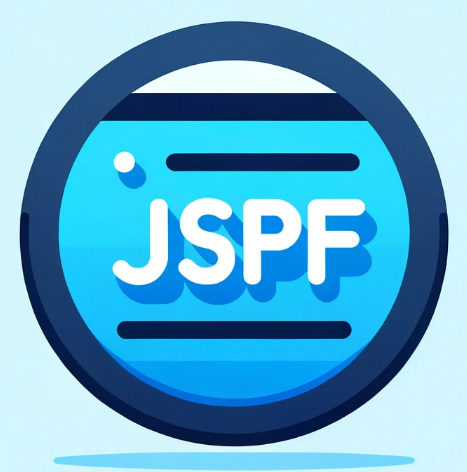.JSPF File Extension

Java Server Page Fragment
| Developer | Oracle |
| Popularity | |
| Category | Developer Files |
| Format | .JSPF |
| Cross Platform | Update Soon |
What is an JSPF file?
The .JSPF file extension holds a unique place. Standing for Java Server Pages Fragment, files with the .JSPF extensions are integral to Java-based web applications.
This article delves into the origin, history, structure, and technical nuances of .JSPF files, along with their advantages, disadvantages, conversion methods, and compatibility across different operating systems.
More Information.
Initially, when JSP technology was gaining momentum in the early 2000s, developers faced challenges in maintaining large JSP files.
The need for modular and reusable code was evident. This led to the introduction of .JSPF files, designed to encapsulate reusable portions of JSP code.
These fragments could be included in multiple JSP pages, promoting code reusability and maintainability. The concept was similar to including header or footer files in HTML but tailored for the dynamic capabilities of JSP.
Origin Of This File.
The .JSPF file extension originates from the Java Server Pages (JSP) technology, which is a part of the Java technology family developed by Sun Microsystems.
JSP was introduced as a server-side programming technology that allowed web developers to create dynamic, user-centric web pages by embedding Java code in HTML pages. The .JSPF file was conceived as a fragment or a part of these JSP files, aimed at reusing code across different JSP pages.
File Structure Technical Specification.
.JSPF file is structurally similar to a .JSP file but typically does not form a complete webpage on its own. Instead, it contains a fragment of JSP code, which can include standard JSP tags, directives, scriptlets, and expressions.
These files are not meant to be directly accessed by a web server but are included in full JSP pages using JSP directives, such as <jsp:include> or the standard JSP includes action.
Technically, .JSPF files are text files containing standard Java code embedded within HTML-like tags. The syntax and programming constructs follow the Java programming language and JSP syntax rules, making them highly compatible with Java web applications.
How to Convert the File?
Converting a .JSPF file essentially means integrating its content into a full Java Server Page (.JSP) or another file format suitable for the intended use.
.JSPF files are fragments of Java Server Pages and are not typically converted into standalone files for execution. Instead, they are included in .JSP files which can then be compiled and run on a server.
Here’s a step-by-step guide:
- Open the .JSPF File: Use a text editor or an Integrated Development Environment (IDE) that supports Java and JSP. This could be Notepad++, Sublime Text, Eclipse, IntelliJ IDEA, or similar.
- Copy the Contents: Select and copy the entire content of the .JSPF file.
- Create or Open a .JSP File: In your text editor or IDE, create a new .JSP file or open an existing one where you want to include the .JSPF content.
- Paste the Contents: Paste the copied .JSPF content into the .JSP file at the desired location. You can also use JSP including directives if you prefer to keep the .JSPF file separate and merely reference it in your .JSP file.
- Save and Compile: Save the .JSP file. The server where the JSP file is deployed will compile it into a Java servlet, which can then be executed to dynamically generate web pages.
Advantages And Disadvantages.
The primary advantage of .JSPF files are the facilitation of modular programming in JSP. They enhance the maintainability, readability, and reusability of code, which are crucial in large-scale web applications.
Their disadvantages include a steep learning curve for developers not familiar with Java and JSP, and potential performance overhead due to the server-side processing required for including these fragments in JSP pages.
How to Open JSPF?
Open In Windows
- Text Editors: Use text editors like Notepad, Notepad++, or Sublime Text. Right-click on the .JSPF file, select “Open with,” and choose your text editor.
- IDEs: For more functionality, use an IDE like Eclipse or IntelliJ IDEA. These IDEs provide syntax highlighting and other features beneficial for coding. Install the IDE, open it, and navigate to the .JSPF file through the IDE’s file explorer.
Open In Linux
- Text Editors: Linux offers various text editors like Gedit, Vim, or Nano. You can open a terminal window, navigate to the directory containing the .JSPF file, and open it with a command like
gedit filename.jspf. - IDEs: Eclipse and IntelliJ IDEA are also available on Linux. After installation, use them to open and edit .JSPF files, benefiting from the integrated Java and JSP support.
Open In MAC
- Text Editors: MacOS users can use TextEdit for a basic option, or download advanced text editors like Sublime Text or Atom.
- IDEs: Eclipse and IntelliJ IDEA are also compatible with MacOS. They provide comprehensive support for JSP and Java development, including .JSPF files.
Open In Android
- Use a code editor app like Quoda Code Editor or an app that supports text files. These won’t offer the full functionality of a desktop IDE but can be used for viewing or minor edits.
Open In IOS
- Similar to Android, use a text or code editor available on the App Store. Apps like Koder or Textastic may support .JSPF files for basic viewing and editing.













